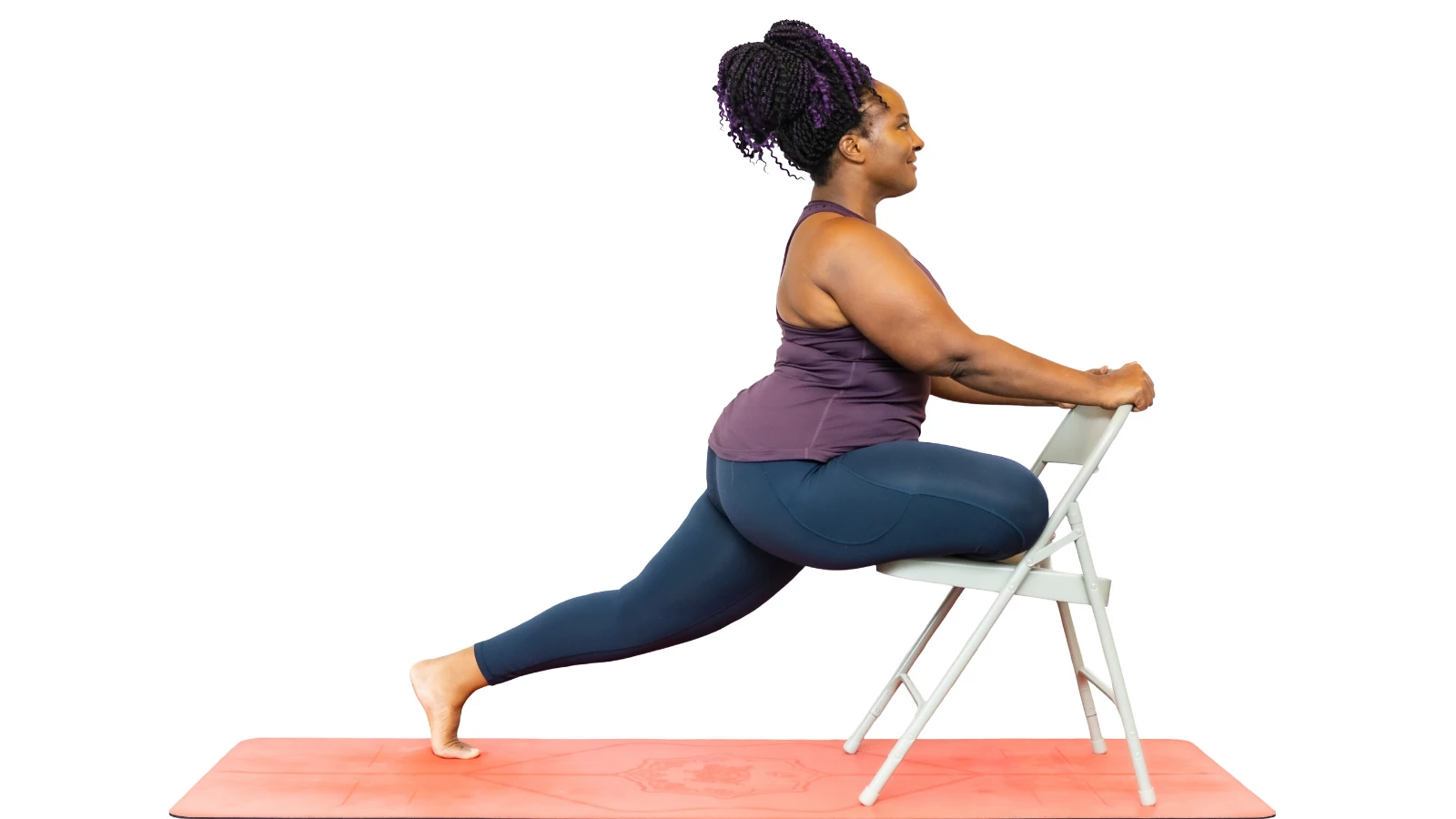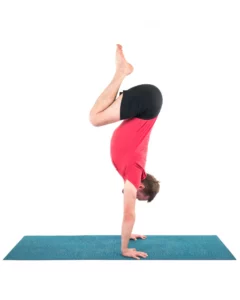Accessible is Advanced: Yoga as a Universal Practice

Anyone who wants to can practice yoga. Anybody can breathe; therefore anybody can practice yoga. But no one can practice every kind of yoga. It has to be the right yoga for the person.
––––T.K.V. Desikachar.
The idea that each of us has our own unique yoga speaks to the universality of the practice. Modern Postural Yoga (MPY) is not one-size-fits-all, and it’s not something you only do when you’re young and fit. Yoga is there for the entirety of our lives, from birth to death, through tension headaches, and utter exhaustion. Yoga offers universal spiritual teachings that invite us to reconnect to our hearts through movement and stillness. The power of the practice lies in its simplicity and groundedness. Yoga begins by recognizing the power of the body. Instead of denying our physicality, as many spiritual traditions tend to do, yoga celebrates the body as the vehicle for this life.
In fact, the body is more than just a vehicle for the energy of our lives. The body is a microcosm of the cosmos that it is created from, and the field for our practice. The challenge arises when the celebration of the body turns into adulation, and we obsess over a physically “advanced” practice. Or the opposite––self-criticism and rejection of a body that has failed us in some way. As someone creeping toward my mid-fifties, I can feel the age in my body for the first time in my life. I can also feel disappointment around asanas that I can longer do, or that I avoid because they’ve injured me in the past.
Yesterday, I made the mistake of looking at a few Instagram accounts of celebrity yoga teachers with millions of followers, and even though the captions were often profound, the images speak for themselves. They show yoga as a combination of advanced gymnastics and modeling. The images are beautiful, and I celebrate the bodies that can do those complicated poses. But that’s not yoga to me. Yoga isn’t something we can see from outside. Instead, yoga is the subtlest shift in consciousness, joining thought and movement together through the glue of the breath. Patanjali offered just three sutras on asana:
Posture should be steady and comfortable. 2.46
(Such posture should be attained) by the relaxation of effort and by absorption in the infinite. 2.47
From this, one is not afflicted by the dualities of the opposites. 2.48
(Bryant, Edwin F. The Yoga Sutras of Patanjali, A New Edition, Translation and Commentary, North Point Press, New York: 2009
I’m particularly interested in Sutra 2.47, which tells us how to practice asana: through relaxation and absorption in the infinite. These are such useful tools in approaching yoga because they highlight the inner work of the practice. It’s about what’s happening in the mind and not the external appearance of the body.
Luckily, things are changing in yoga, and we’re moving away from the body obsession of the commercial yoga industry. I can feel a groundswell of awareness around the universality of yoga, and the importance of equity in practice. On Instagram, I also noticed something amazing––the hashtag #accessibleyoga has been used almost 40,000 times! There is a shift happening through the hard work and dedication of thousands of yoga teachers and practitioners around the world who understand the depth of a practice that can’t be limited, packaged, or commercialized. There is a renewed interest in the fullness of yoga beyond the physical.
Accessible Yoga is often perceived as a practice for a niche market. The idea of adapting yoga to people with disabilities and other marginalized communities. But that’s just part of the story. To me, Accessible Yoga is about accessing the depth and breadth of yoga. It’s about expanding your awareness to embrace all humanity through our practice. Or, as Matthew Sanford would say, “It’s humanity disguised as yoga.”
This idea is described powerfully in a speech Matthew Remski gave at our Accessible Yoga Conference (1) in Toronto last year: “So one of the most precious things I believe Accessible Yoga points to is that we can reach through the display and armoring of privilege to find a place where the gifts of yoga can be shared. The world might be seduced by spectacles of racial, class-based, gendered, and ableist oppression, but parallel to that spectacle––backstage, off stage even ––there might be a simpler place where yoga isn’t some hybrid of physics and engineering, Crossfit, and a glamour shoot. It’s a plain, everyday room where experience is simple, internal, and shared.”
In other words, if spirit is a universal principle, how can we have a spiritual practice that is limited to only certain people with certain bodies? That’s why I say that accessible yoga is the most advanced yoga that there is. It represents a broad understanding and approach to yoga that is grounded in the ability to accept differences and diversity and still stay rooted in connection. Otherwise, we are caught up and distracted by physical perfection. I would go even further to say that if your practice and teaching is not accessible, then it’s not yoga.
Also, read...
Healthy Heart: How Yoga Can Help Prevent Heart Disease
Warrior I Pose: 5 Strengthening Variations
Deepening Your Home Yoga Practice: An Interview with Judith Hanson Lasater
Related courses
Breath as Medicine: Yogic Breathing for Vital Aging
Yoga and Myofascial Release: Releasing Chronic Tension with the Bodymind Ballwork Method
Yoga and Detoxification: Tips for Stimulating Lymphatic Health

Jivana Heyman is the founder and director of Accessible Yoga, an organization dedicated to increasing access to the yoga teachings and supporting yoga teachers. He’s the author of the books: Accessible Yoga: Poses and Practices for Every Body; Yoga Revolution: Building a Practice of Courage & Compassion; and a new book, The Teacher’s Guide to Accessible Yoga: Best Practices for Sharing Yoga with Every Body. His books, classes, and trainings offer support to yoga teachers and yoga therapists in finding ways to bring creativity and collaboration into their teaching while still respecting the ancient yoga tradition. More info at jivanaheyman.com
- http://matthewremski.com/wordpress/jonah-matsyendra-jivana-heyman-and-northrop-frye-keynote-address-to-the-accessible-yoga-conference-toronto-2018/



